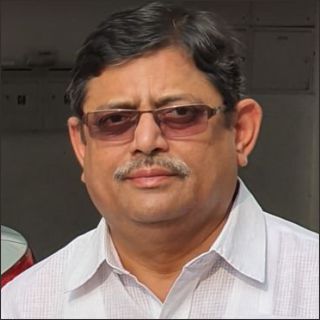OPPORTUNITIES & CHALLENGES IN NORTH EAST INDIA
AN INITIATIVE OF THE IAS BATCH OF 1986
Eminent speakers from the IAS 1986 batch have agreed to share their experience, expertise and views with the participants. in a webinar on "Opportunities & Challenges in North East India" on Sat, 24 July 2021, from 0930 to 1300 hrs. Access to the Webinar will be through this webpage - www.showcase.imrmedia.in on PCs, ipads and smartphones.
Objective
The objective is to tap the collective wisdom of the Batch of '86 and generate constructive debate amongst younger administrators, researchers & scholars, Academia and members of selected institutions.
Northeast India is standing at the verge of a trillion dollar business opportunity. NER’s economic linkages can be accelerated by a number of measures across different areas, of which trade logistics, e-commerce supply chains, transportation and border infrastructure deserve better attention. While the strategic and political importance of the North-East region of the country has been well-realised in formulating India's neo-economic diplomacy and foreign policy in the form of the Look East Policy, the crucial development issues are intra-regional and intra-state - connectivity and trade, infrastructure, security and governance and so on.
Schedule
SATURDAY, 24 JULY 2021
Introductory. (0930-0950 hrs)
Welcome Address and Opening Remarks -- Dr D Bhalla, Adviser to Chief Minister, Nagaland.
Inaugural Address by Chief Guest -- Gen Bipin Rawat, PVSM, UYSM, AVSM, YSM, SM, VSM, ADC, Chief of the Defence Staff
Strategic Significance and Security Environment (1000 - 10045 hrs)
Mr Ravi Capoor, CEO Sansad TV. "Strategic Significance of North East India."
Mr Shambhu Singh, former Special Secretary Transport, GOI. "Internal Security Scenario."
Questions & Answers
Digital Connectivity (1045 - 1115 hrs)
Mr TK Paul, Adviser Technology, Dept. of Telecommunications. "Digital Connectivity in the North East"
Questions & Answers
Natural Resources, Trade and Industry (1115 - 1200 hrs)
Mr Vinod Tewari, Addl Secretary Coal & Engery. "Natural Resources - Potential and Opportunities"
Mr Atul Chaturvedi, Secretary Animal Husbandry & Dairying. "Industry and Investment Possibiliites."
Disaster Management, Skills and Labour (1200 - 1245 hrs)
Mr GVV Sarma, Member, Board of Revenue, Odisha and Former Member Secretary, NDMA. "Stepping up disaster preparedness and resilence."
Dr J Suresh Babu, former Chief Secretary Manipur.
Questions & Answers
Tourism Strategy (1245 - 1315 hrs)
Dr D Bhalla, Adviser to Chief Minister, Nagaland
Questions & Answers
Maj Gen Ravi Arora (Vote of Thanks).
Development and Growth
Many of the issues are inter-connected and growth depends upon:
* Connectivity (physical and digital), trade and industrialisation.
* Population, Education, skills and labour.
* Natural resources like forests, rivers, coal, oil, etc and their effective utilisation.
* Social and physical infrastructure, demographic characteristics and the political environment.
* Exploiting the tourism potential of the region.
Physical Connectivity
Poor transport connectivity in the North East was one of many reasons for its regional backwardness. Compared to what was a decade back, inter-country bus, air or rail services from Northeast India are in better shape today. Railway connectivity in Northeast has progressed well, no doubt. Capitals of Northeastern states are getting connected by rail with the rest of India. But, the supply does not match the demand in railways. Drastic reforms are must. Railway connectivity with Bangladesh will be a game changer.
Road transport is the dominant mode of transportation in the NER. What NER needs, perhaps in an accelerated manner, is seamless road connectivity between Guwahati and border towns. International projects like the Trilateral Highway between India, Myanmar and Thailand is coming up very fast.
Connectivity through waterways has also witnessed some major changes in recent years. Promoting the use of waterways can lead to greater economic activities, which in turn will have a positive impact on the local economy and livelihoods.
Digital Connectivity
The digital divide between the rural and urban areas in the region remains wide. "Digital Northeast 2022" was launched in 2017 to "leverage digital technologies to transform the lives of the people of North East India, enhance ease of living and ensure inclusive and sustainable growth."
The objectives of improving mobile connectivity in all the villages in the region, improving high-speed internet connectivity, last mile internet connectivity from the village to a consumer have not been achieved satisfactorily. Improvement of the digital infrastructure for digital access has become more important following the outbreak of COVID-19 pandemic. Education is one major sector in which access to internet has become critical with most of the states in the region pushing for online classes.
Trade and Commerce
The North East has the potential to be a tourism destination, industry hub and an IT and organic farming hub.
There is an institutional framework for promotion of entrepreneurship. Several institutes in the NER support marketing of NE products through e-commerce platforms. There are various credit related schemes, Start-up Initiatives, Cooperatives, Commissions, E- Commerce portals and so on.
With Bangladesh allowing the use of its two ports for movement of goods to and from India through its territory, three landlocked states in the northeast region of India – Assam, Meghalaya and Tripura—will get access to open sea trade routes from Chattogram and Mongla Ports via Indian ports.
The industrial scenario is not encouraging in terms of the number of factories as well as the shares of fixed capital, invested capital, net value-added and the number of workers in the industrial sector as compared to the all-India position. Improvement is required in enabling environment and vibrant ecosystem to enable entrepreneurs to tap the potential of the region.
Population, Education, Skills and Labour
The North Eastern region of India has its share of over 1.07 per cent of the youth population of the country and also a relatively higher proportion of youth unemployment (57.37 per 1,000), indicating that the challenge is paramount. The eight North Eastern states have their unique requirements in skill-based training, depending on the natural resources, industry and native trades.
With a large number of village schools and lower-end fees, education has been made accessible and affordable to the poor and the marginalized. There are difficulties in getting well-trained and qualified teachers to teach in remote schools.
While there are number of colleges and universities, North East Region lags behind in quality education and lack of constructive higher educational institutions as compared to other regions of India. The region has been witnessing rapid expansion of higher educational institutes, but there is lack of attention in systematic educational planning.
The reasons for lack of quality may lie in lack of industries resulting in educated youth remain unemployed, and poor administration in higher educational institutes.
Natural Resources and Their Utilisation
Northeast India is a storehouse of natural resources. Important natural resources like land, forest vegetation, and livestock, etc., which are essential for creating employment and generation of GDP in Northeast India are either underutilized, unutilized, and mismanaged. The main resources comprise chiefly lime-stone, coal, natural oil and gas, uranium, feldspar and others. Reserves of petroleum and natural gas in the region are estimated to constitute a fifth of India's total potential.
Brahmaputra and Barak rivers are the two largest river basins in Northeast India. Only 3.2 per cent of the potential hydro-electric power is installed, The potential is 63,257MW as against 1,911 MW installed.
Out of the total geographical area of 25.5 million hectares 12.5 million hectares are forests. A large percentage is controlled by the communities.
Security Situation
A pre-requisite to attract industry and private investment is a peaceful security environment. Investment fears risks. The biggest risk is of conflict.
External Security. Security concerns—both external and internal—have played a key role in the context of the North-East. While all eight states of the North-East have international borders with China, Myanmar, Bangladesh, Myanmar or Bhutan, the whole of Arunachal Pradesh is claimed by China as its territory. Moreover, Sikkim and Arunachal Pradesh are neighbours to three countries and Assam and Mizoram share borders with two countries. With such vast borders there is always room for illegal immigration, arms smuggling, cattle and commodity smuggling.
Internal Security. All is not well internally on their borders. The border disputes in the region primarily involve Assam because four states such as Arunachal Pradesh, Mizoram, Nagaland and Meghalaya were carved out of the region’s most populous state over the years. Despite pacts, differences fester due to encroachments and other differences.
Several militant groups have been fighting against the governments of India, Bhutan and Myanmar. Although weakened over the years, some have formed alliances to coordinate their actions.
Tourism Potential
Northeast India’s unique selling points are associated with the incomparable natural and cultural heritage and associated recreational opportunities found there.
A disruptive approach is required to develop the full potential of tourism in the North East and to make Northeast India a recognizable brand in the international tourism marketplace. The North East has it all - Jungles, Culture, Cuisine, Trekking, Heritage & History, Wildlife, Religious sites, People, Festivals. But it all needs to be developed and repackaged. There is competition close by.
A new strategy must include development of secondary services, access and marketing resulting in sustainable quality and mass tourism, while conserving and enhancing the character of the local environment, culture, aesthetics, quality of life and well-being of host communities in the region.
The keys are private sector participation, government support, community involvement, enhancement of destination appeal, land use, international cooperation with organisations like National Geographic Society, International Youth Hostels, Trekking Federations, World Wide Fund, etc.










(a) Civil Services officers through each batch WhatsApp Groups.
(b) Think Tank members
(c) Academia (professors)
(d) Serving defence officers
(e) Industry
For Registered Users and Valid Pass Holders
Log-in with username "guest@mail.com" and password "guest"
If not already registered, buy a pass now from the options below.
